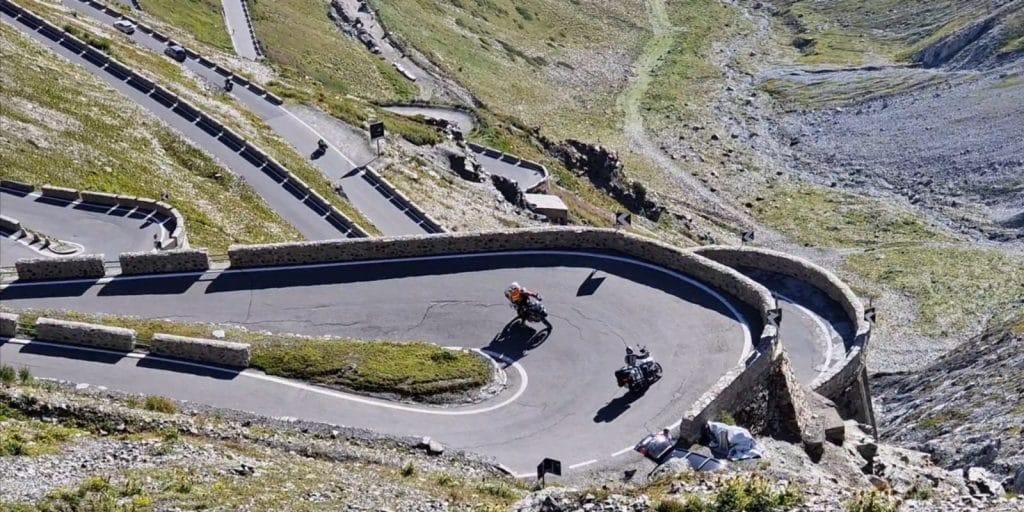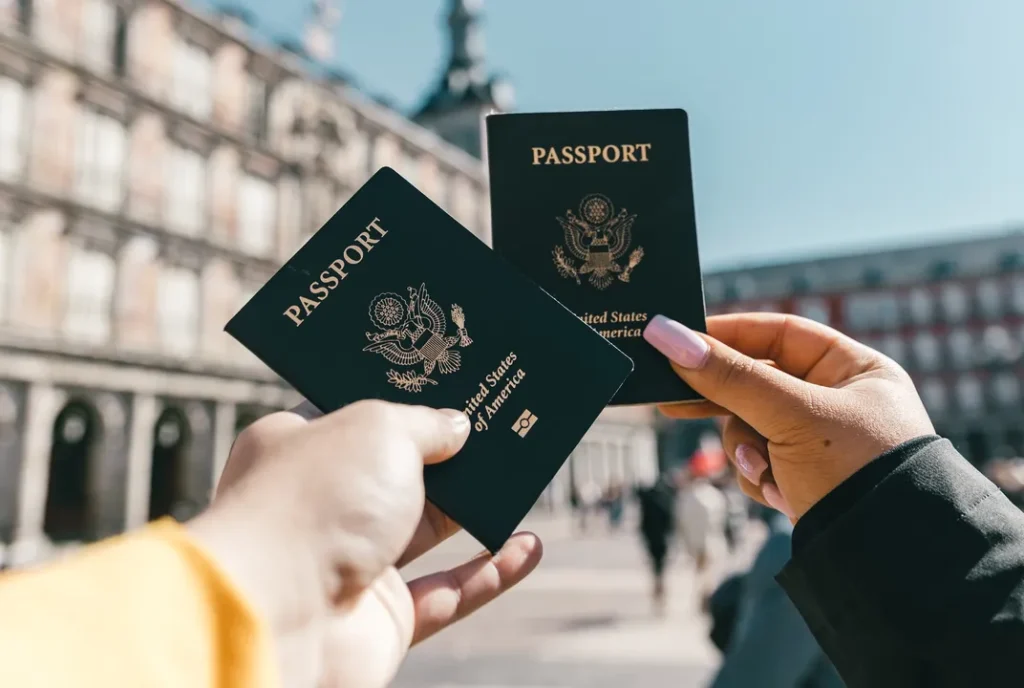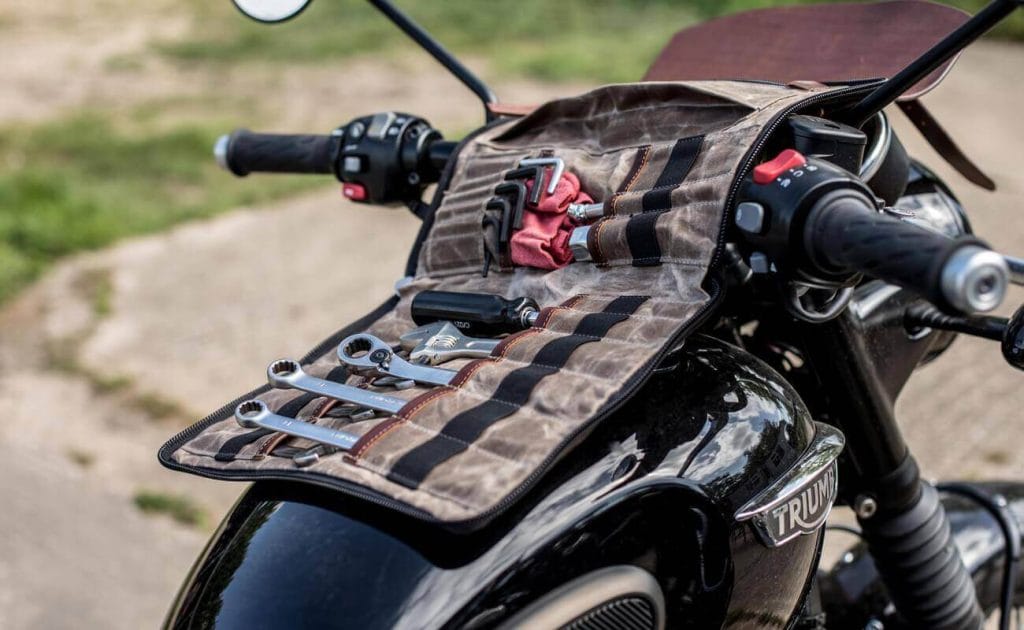Exploring Europe by motorcycle is one of the most exciting and liberating experiences a traveler can have. With landscapes ranging from the mountains of the Alps to the coasts of the Mediterranean, every kilometer traveled on two wheels offers a new adventure. However, planning a motorcycle trip through Europe requires careful preparation to ensure everything goes as planned. Here we present a practical guide on how to plan your motorcycle adventure through Europe.
Main and Most Attractive Motorcycle Routes in Europe
Europe offers a wide variety of motorcycle routes that stand out for their beauty, difficulty, and cultural richness. Below are some of the main and most attractive routes:

1. The Alps Route (France, Switzerland, Italy, Austria)
- Description: This is one of the most iconic routes for motorcyclists. The Alps offer stunning mountainous landscapes with tight curves, winding roads, and some of the most famous mountain passes, such as Stelvio Pass (Italy), Grossglockner (Austria), and Col de l’Iseran (France).
- Highlights: Stelvio Pass (Italy), Grossglockner (Austria), Col de l'Iseran (France), Grimsel Pass (Switzerland).
2. Amalfi Coast Route (Italy)
- Description: A journey along the southern coast of Italy, with views of the Tyrrhenian Sea. The narrow, winding roads offer an exciting challenge, and picturesque towns like Positano and Amalfi add a special charm.
- Highlights: Sea views, Positano, Amalfi, Ravello.
3. Transfăgărășan Route (Romania)
- Description: Considered one of the most spectacular roads in the world, it crosses the Carpathian Mountains in Romania. It offers tight curves, tunnels, and stunning views of Balea Lake and Balea Waterfall.
- Highlights: Balea Lake, Balea Waterfall, Poenari Fortress (former residence of Vlad the Impaler).
4. Atlantic Road (Norway)
- Description: This short but spectacular route crosses an archipelago connected by a series of bridges that seem to float over the Atlantic. It is famous for its changing weather conditions and dramatic landscapes.
- Highlights: Atlantic Bridges, Averøy Islands, mountains, and fjords.
5. Black Forest Route (Germany)
- Description: This region in southwest Germany is famous for its dense forests and winding roads. The route offers both fast sections and curve-filled areas.
- Highlights: Titisee Lake, the B500 road, Baden-Baden, Triberg.
6. French Riviera Route (France)
- Description: Riding along the French Riviera is an incredible experience. The Mediterranean views, along with glamorous destinations like Nice, Cannes, and Monaco, make this a unique journey.
- Highlights: Monaco, Nice, Cannes, Antibes, Saint-Tropez.
7. Isle of Man Route (United Kingdom)
- Description: Famous for the annual Isle of Man TT race, this island offers a challenging route with a mix of fast and technical roads, all in a picturesque setting.
- Highlights: TT Circuit, Snaefell Mountain, views of the Irish Sea.
8. North Coast 500 Route (Scotland)
- Description: This is one of Europe’s newest and most attractive routes. It follows the north coast of Scotland, offering spectacular views of mountains, lochs, and castles.
- Highlights: Scottish castles, mountains, pristine beaches, John o' Groats.
9. Transalpina Route (Romania)
- Description: Along with the Transfăgărășan, this is another impressive road crossing the Carpathians. Transalpina is the highest road in Romania and offers equally stunning landscapes.
- Highlights: Traditional Romanian villages, Parâng Mountains, mountain passes.
10. Pyrenees Route (Spain-France)
- Description: This route crosses the Pyrenees, the mountain range separating Spain and France. It offers spectacular mountain landscapes, with multiple route options including both paved roads and tracks.
- Highlights: N-260 road (Spain), Col d'Aubisque (France), Ordesa National Park.
These routes are not only challenging and exciting for any motorcyclist, but they also offer the opportunity to explore some of the most beautiful and culturally rich regions in Europe.
Valencia, Spain: Route in the Sierra Calderona Natural Park
In Valencia, Spain, a very popular and attractive motorcycle route is the Sierra Calderona Natural Park Route.

Sierra Calderona Natural Park Route
- Description: This route traverses the Sierra Calderona Natural Park, one of the natural gems of the Valencian Community. The route offers a journey through mountainous landscapes, pine forests, and spectacular panoramic views. It is an ideal route for those looking to combine the thrill of riding with the tranquility of nature.
- Itinerary: Starting from Valencia, head north, passing through towns like Bétera, Serra, and Náquera. From here, the roads lead into the heart of Sierra Calderona, with gentle curves and winding sections that are a delight for motorcyclists.
- Highlights: El Garbí (a viewpoint with stunning views of the coast and inland areas), Porta Coeli Monastery, pine forests, and roads with little traffic. Additionally, there are multiple spots to stop and enjoy nature or visit charming small towns.
This route perfectly combines exciting riding with the exploration of a spectacular natural environment, just a short distance from the city of Valencia.
Documentation and Legal Requirements for Traveling to Europe Depending on Your Place of Origin
When planning a trip to Europe, it is essential to understand the documentation and legal requirements based on your country of origin. The requirements vary depending on your nationality, the purpose of your visit, and the countries you plan to visit within Europe. Below is a general guide based on different regions of the world:

1. Citizens of the European Union (EU) and Schengen Area
- Documentation Required:
- ID Card or Passport: Citizens of EU countries and Schengen Area states can travel freely within these regions without a visa or passport. An ID card is usually sufficient.
- Visa Requirements: No visa is required for travel within the EU and Schengen Area.
- Longer Stays or Work: A visa or residence permit is required for stays longer than 90 days or for purposes like work or study.
3. Citizens of Latin American Countries
- Documentation Required:
- Passport: A valid passport with sufficient validity beyond the planned stay is required.
- Visa Requirements:
- Visa-Free Access: Citizens of several Latin American countries, including Argentina, Brazil, Chile, Mexico, and Uruguay, can enter the Schengen Area without a visa for up to 90 days within a 180-day period for tourism, business, or family visits.
- ETIAS (Starting 2024): Similar to travelers from the U.S. and Canada, citizens of visa-exempt Latin American countries will need to obtain ETIAS authorization starting in 2024.
- Longer Stays or Work: A visa is required for stays longer than 90 days or for work, study, or residency purposes.
4. Citizens of Asian and African Countries
- Documentation Required:
- Passport: A valid passport is required, with a minimum validity of at least six months from the date of entry.
- Visa Requirements:
- Schengen Visa: Most Asian and African nationals need a Schengen visa to enter Europe. This visa allows stays of up to 90 days within a 180-day period for tourism, business, or family visits.
- Visa Application Process: The Schengen visa must be applied for at the consulate or embassy of the main destination country in Europe. The application process typically requires providing documents such as a travel itinerary, proof of accommodation, travel insurance, financial statements, and sometimes a letter of invitation.
- Longer Stays or Work: For longer stays, work, or study, specific visas or residence permits are required, which must be applied for in advance.
5. Citizens of Middle Eastern Countries
- Documentation Required:
- Passport: A valid passport with at least six months of validity is required.
- Visa Requirements:
- Schengen Visa: Most travelers from the Middle East require a Schengen visa for short stays in Europe. The process is similar to that for Asian and African citizens, requiring detailed documentation.
- Longer Stays or Work: A specific visa or residence permit is necessary for stays longer than 90 days or for employment, study, or family reunification.
6. Traveling to Non-Schengen European Countries
- United Kingdom: The UK is not part of the Schengen Area. Travelers from many countries need a visa, while others, like citizens of the U.S., Canada, and Australia, can enter visa-free for up to 6 months. Post-Brexit, EU citizens may also need to meet specific requirements.
- Ireland: Ireland is also outside the Schengen Area. Visa requirements differ, but citizens of many Western countries can enter without a visa for short stays.
- Eastern Europe (Non-Schengen): Countries like Russia, Belarus, and Ukraine have their own visa regimes, often requiring a visa for entry. It's essential to check each country’s specific requirements.
General Recommendations
- Travel Insurance: Most European countries require visitors to have valid travel insurance, particularly when applying for a Schengen visa. The insurance should cover medical expenses and repatriation.
- COVID-19 Considerations: While restrictions have eased, some countries may still require proof of vaccination or negative COVID-19 tests. It’s important to check current regulations before traveling.
- Documentation: Always carry copies of important documents like your passport, visa, insurance, and travel itinerary. This can be helpful in case of loss or theft.
By understanding and preparing for the documentation and legal requirements based on your country of origin, you can ensure a smooth and enjoyable trip to Europe.
Prepare Your Motorcycle
Traveling through Europe on your own motorcycle can be an incredible experience, but it requires careful preparation to ensure everything goes smoothly. Here's what you need to prepare:

1. Vehicle Documentation
- Vehicle Registration Certificate: Ensure you have your motorcycle's registration certificate, which proves the vehicle is registered and authorized to be on the road.
- Insurance: It's essential to have motorcycle insurance that covers the countries you plan to visit in Europe. The insurance should include at least third-party liability coverage. Check if you need an International Insurance Certificate (Green Card) for certain countries.
- Vehicle Inspection (ITV): If your motorcycle is over a certain age (usually four years), it must have a valid technical inspection (ITV). Ensure the inspection is up to date and carry the certificate with you.
- Emissions Sticker: In some European countries, like Germany and France, you need an emissions sticker to enter low-emission zones. Research and obtain this before traveling if necessary.
2. Driver’s License
- Valid Driver’s License: You must carry your driver’s license, which should be valid and appropriate for the category of motorcycle you are riding.
- International Driving Permit (IDP): While many European countries accept foreign licenses, some may require an International Driving Permit, especially if your license is not issued in the EU or is not in a European language. It’s advisable to obtain an IDP if your license is not in English, French, German, or Spanish.
3. Safety Equipment
- Approved Helmet: You must wear an approved helmet that meets European standards. In many countries, this is mandatory for both the rider and the passenger.
- Reflective Vest: Some countries, like France, require you to carry a reflective vest on the motorcycle, which must be worn in case of an emergency.
- Gloves and Protective Clothing: It’s recommended, and in some cases mandatory, to wear gloves, jackets with protections, pants, and appropriate boots to ensure your safety.
4. Route Planning
- Map or GPS: Carry an up-to-date map or GPS device with detailed maps of Europe. This will help you avoid getting lost and plan your stops in advance.
- Tolls and Road Fees: Research the roads and highways you plan to take. Some countries have specific tolls for motorcycles or vignette systems (stickers) that you need to purchase before using highways.
- Low-Emission Zones: Check if any cities or areas you will visit have restrictions for polluting vehicles, and ensure you comply with the regulations.
5. Motorcycle Maintenance
- Full Check-Up: Before departing, take your motorcycle for a complete check-up. Inspect the brakes, tires, lights, oil, and coolant levels, and ensure everything is in proper working order.
2. Types of Accommodation
- Hotels and Motels: Europe has a wide range of hotels and motels, from budget options to luxury stays. Consider booking in advance, especially during peak tourist seasons or in popular destinations.
- Bed and Breakfasts (B&Bs): B&Bs offer a more personalized experience and often include breakfast. They can be found in both urban and rural areas.
- Hostels: Ideal for budget-conscious travelers, hostels offer shared accommodations and are great for meeting other travelers. Many hostels also offer private rooms for more privacy.
- Guesthouses and Pensions: These are small, often family-run establishments that offer a more intimate and homely experience compared to hotels.
- Camping: Europe is well-equipped with campsites, many of which are biker-friendly. If you enjoy the outdoors, consider bringing a tent or looking for campsites that offer cabin rentals.
- Motorcycle-Friendly Accommodations: Some accommodations cater specifically to motorcyclists, offering secure parking, repair facilities, and even drying rooms for wet gear.
3. Booking Accommodations
- Advance Booking: It’s advisable to book your accommodation in advance, particularly if you’re traveling during high season or visiting popular cities and tourist areas.
- Online Platforms: Use online booking platforms like Booking.com, Airbnb, or Hostelworld to find and reserve accommodations that suit your needs and budget. These platforms allow you to filter options based on amenities, location, and price.
- Direct Booking: Consider booking directly through the hotel or guesthouse’s website, as some establishments offer better rates or special deals for direct bookings.
- Last-Minute Options: For more flexible travelers, apps like HotelTonight can be useful for finding last-minute deals.
4. Secure Parking for Your Motorcycle
- Safe Parking: Ensure that your accommodation offers secure parking for your motorcycle. In cities, look for places that provide gated parking, a garage, or a designated motorcycle parking area.
- Covered Parking: If possible, choose accommodations that offer covered parking to protect your motorcycle from the elements.
- Street Parking: In some locations, street parking might be the only option. Make sure to lock your motorcycle securely and consider using a cover to keep it out of sight.
5. Accommodation Amenities
- Wi-Fi: Most accommodations in Europe offer free Wi-Fi, which is useful for planning the next day’s route or staying in touch with friends and family.
- Laundry Facilities: Long trips may require doing laundry on the road. Look for accommodations that offer laundry services or have self-service laundry facilities.
- Breakfast Options: Having breakfast included can save you time in the morning, allowing you to hit the road earlier.
- Drying Facilities: If you’re traveling in wet conditions, having access to drying facilities for your gear can be a significant advantage.
6. Local Experiences
- Stay in Local Areas: Consider staying in smaller towns or rural areas for a more authentic experience. These locations often offer unique local culture, food, and interactions with locals.
- Proximity to Attractions: If you’re planning to visit specific attractions, choose accommodations that are conveniently located to minimize travel time.
7. Budget Considerations
- Balance Comfort and Cost: Decide how much you’re willing to spend on accommodation. While budget options are great for saving money, you might want to splurge occasionally for comfort, especially after a long day of riding.
- Seasonal Prices: Be aware that accommodation prices can vary greatly depending on the season. Prices are typically higher during summer and in tourist hotspots.
8. Cancellations and Changes
- Flexible Booking Policies: When booking, consider accommodations with flexible cancellation policies in case your plans change. This can be especially helpful if you need to alter your route or stay longer in a particular location.
- Travel Insurance: Having travel insurance that covers accommodation cancellations can provide peace of mind in case of unexpected changes to your trip.
By carefully planning your accommodation, you can ensure that your motorcycle journey through Europe is not only adventurous but also comfortable and hassle-free.
Luggage and Personal Preparation for Your Motorcycle Trip Through Europe
Proper packing and personal preparation are crucial for a successful motorcycle trip across Europe. Here’s a comprehensive guide to help you get ready:

1. Packing Your Luggage
A. Motorcycle Luggage Options
- Saddlebags: These are mounted on either side of the motorcycle and are ideal for distributing weight evenly. They come in various sizes and are often waterproof.
- Panniers: Rigid side cases that provide more protection for your belongings. They are more secure but may be less flexible than soft saddlebags.
- Tank Bags: These attach to the top of the gas tank and are great for keeping essential items easily accessible. Many have a clear top for maps or GPS.
- Tail Bags: Mounted on the rear of the bike, these are useful for additional storage and can be used in conjunction with other luggage.
- Backpacks: If you prefer, you can use a motorcycle-specific backpack with chest and waist straps to ensure stability and comfort.
B. Packing Essentials
- Clothing: Pack versatile clothing that can be layered for different weather conditions. Consider moisture-wicking and quick-drying materials. Don’t forget waterproof gear and a warm layer for cooler temperatures.
- Footwear: Bring sturdy, comfortable boots that offer protection and are suitable for walking. Waterproof options are advantageous.
- Rain Gear: A high-quality rain suit or jacket and pants will keep you dry during unexpected showers.
- Personal Items: Include toiletries, medications, and personal hygiene items. A small, travel-sized first aid kit is also recommended.
- Documents: Keep all necessary documents (passport, driver’s license, motorcycle paperwork) in a secure, waterproof pouch or bag.
- Electronics: Bring chargers and adapters for your electronics. Consider a power bank for recharging devices on the go.
C. Tools and Spare Parts
- Basic Tools: A small toolkit with essential tools (screwdrivers, pliers, wrenches) for minor repairs.
- Spare Parts: Bring critical spare parts like bulbs, fuses, and a tire repair kit. Having a spare chain or belt can also be useful.
- Cleaning Supplies: Include a small cloth or sponge and cleaner for maintaining your motorcycle’s appearance and functionality.
2. Personal Preparation
A. Physical Preparation
- Fitness: Ensure you’re in good physical condition, as long rides can be demanding. Regular exercise and stretching can help you stay comfortable on the road.
- Rest: Get plenty of rest before starting your trip. Fatigue can significantly impact your riding performance and safety.
B. Mental Preparation
- Research: Familiarize yourself with the...